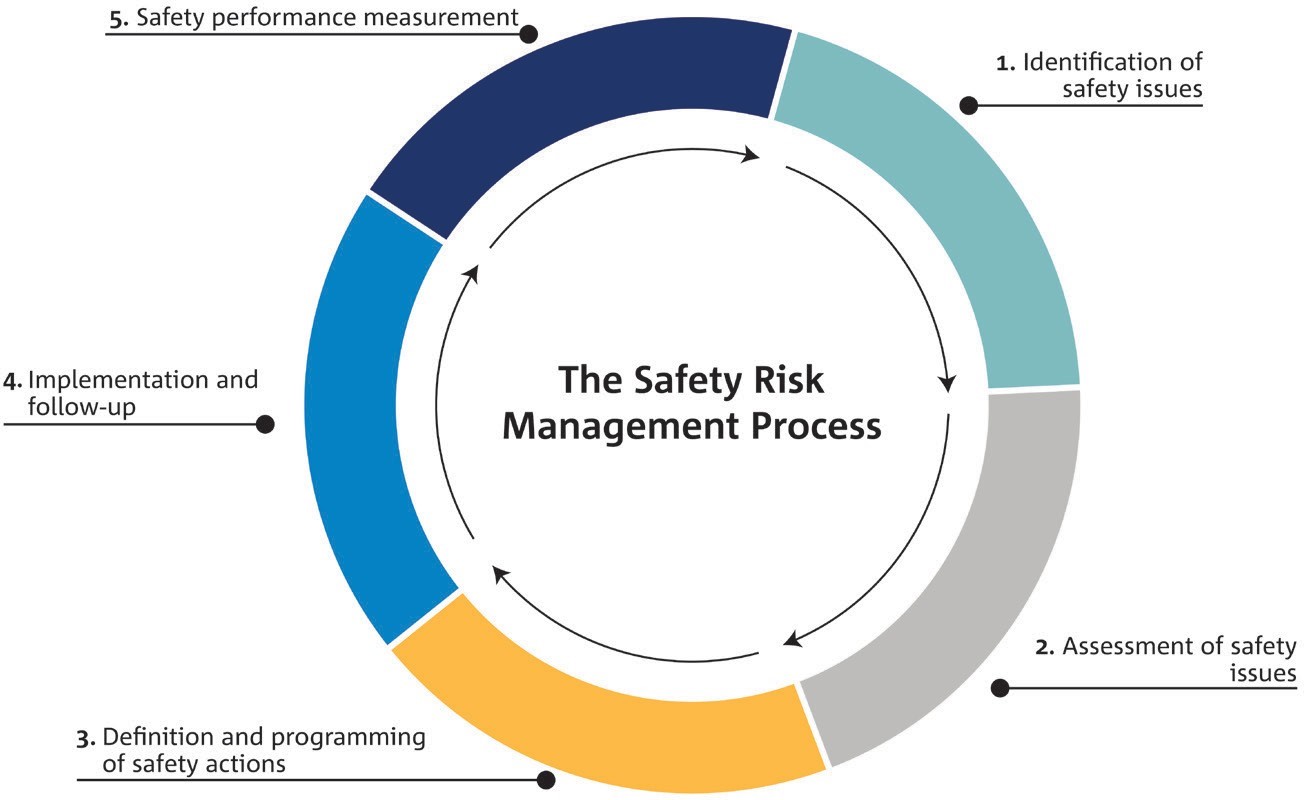Point of contact: Safety.Analysis [at] easa.europa.eu
The work of the Agency centres on ensuring the highest levels of civil aviation safety, through certification of aviation products, approval of organisations to provide aviation services, development and implementation of a standardised European regulatory framework. Our management of safety risks within the European Aviation System is further augmented through our work in accident investigation and safety analysis (safety risk management).
These fields of work provide a data-driven approach to actively monitor the health of the aviation system in Europe and are essential to contributing to the European Safety Risk Management process (see image below) and the European Plan for Aviation Safety (EPAS). The identification and assessment of safety issues, development of mitigation actions and measurement of their effectiveness serve to provide a positive feedback loop with the aim of reducing the systemic and operational safety risks present in the European Aviation System.

The Agency also conducts studies and provides reports concerning the safety of European and world-wide aviation. Data on the aviation system, including occurrences (accidents and incidents), is collected and categorised to form the basis for the Safety Risk Portfolios, which are published on an annual basis in the Annual Safety Review. In addition to analysing safety issues and publishing statistics, data also contributes to the monitoring of safety performance in Europe. To ensure that our Safety Risk Portfolios accurately reflect the safety risks at a pan-European level, the Agency works with a diverse representation of collaborative partners, both in terms of geography and aviation domains, through two main platforms i.e. the Network of Analysts (NoA) and Collaborative Analysis Groups (CAGs):
The NoA comprises EASA, European Commission, EASA Members States and an observer. It was initially formed as a voluntary network to support the analysis of safety data for the European Aviation Safety Plan, which is the predecessor to the EPAS, in 2011. The implementation of EU Regulation 376/2014 has formalised the role of the NoA and underscored the importance of safety analysis in supporting the EPAS and improvement of aviation safety in Europe. The NoA currently meets twice a year, once in Spring and once in Autumn.
The CAGs are expert groups, responsible for analysing the safety of European aviation. Each CAG works on a domain and its membership is derived from key stakeholders in the domain. These stakeholders may come from industry or from EASA’s regulatory partners. Each CAG meets up to three times per year to review available safety information, arrange in depth safety issue analyses and to identify emerging issues. They monitor the safety performance of their domain and provide feedback on the effectiveness of actions taken.
At present, stage CAGs have been formed for the following aviation domains:
- Aerodrome and Ground Handling
- Air Traffic Management
- Balloons
- Commercial Air Transport Aeroplanes
- General Aviation
- Human Factors
The NoA and the CAGs are complementary analysis groups with different areas of focus. The NoA undertakes analyses and tasks which are more systemic in nature e.g. performance monitoring, whereas the CAGs delve in-depth into domain specific safety issues. The analyses conducted by the NoA and CAGs contribute to the Safety Risk Portfolios and the safety actions which may be adopted in the EPAS.